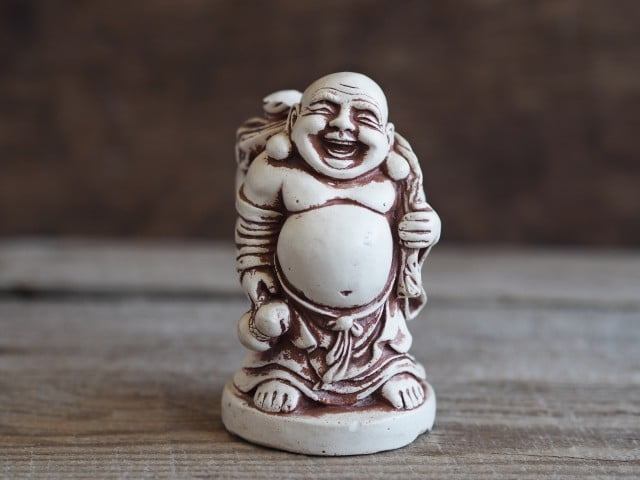Are you looking to create a harmonious and balanced living space? Understanding the principles of feng shui for house design can help you achieve just that. From choosing the right colors and materials to arranging furniture and incorporating natural elements, feng shui offers a holistic approach to creating a conducive environment for overall well-being.
The basics of feng shui revolve around creating a harmonious flow of energy, known as chi, within a space. This ancient Chinese practice is based on the belief that the arrangement and design of a space can impact our lives in various ways, including our health, relationships, and success. By implementing feng shui principles in your house design, you can create an environment that promotes positive energy and balance.
When it comes to feng shui house design, everything from the layout to the colors and materials used plays a crucial role. In this article, we will explore the influence of feng shui on house design, as well as provide tips for choosing the right colors and materials, furniture arrangement, incorporating natural elements, lighting, and more.
Whether you are looking to redesign your current home or are in the process of building a new one, understanding feng shui principles can help you create a space that supports your well-being and success.
The Basics of Feng Shui and Its Influence on House Design
Feng shui for house design is an ancient Chinese practice that focuses on creating a harmonious environment to promote well-being and balance. The basic principles of feng shui are centered around the flow of energy, or “chi,” and how it can be optimized within a space. When applied to house design, feng shui takes into consideration the layout, orientation, colors, materials, furniture arrangement, and overall atmosphere of a home.
One of the key aspects of feng shui for house design is the concept of yin and yang, which represents the balance between opposing forces. In the context of a home, this means creating a balance between different elements such as light and dark, soft and hard, or vibrant and subtle. For example, incorporating natural materials like wood or stone alongside modern elements can help achieve this balance.
Another important principle in feng shui house design is the Bagua map, which divides a space into nine areas that correspond to different aspects of life such as wealth, family, career, and health. By using the Bagua map as a guide, homeowners can strategically place certain colors, objects, or furniture to enhance each area of their home based on their individual goals and desires.
Additionally, feng shui emphasizes the importance of decluttering and organizing a space to allow energy to flow freely. This means removing any unnecessary items or obstacles that may disrupt the natural flow of chi throughout the home. When combined with thoughtful furniture placement and proper lighting, these simple adjustments can make a significant impact on the overall harmony and energy within a living space.
| Principles | Key Points |
|---|---|
| Yin and Yang | Create balance between opposing forces |
| Bagua Map | Utilize map to enhance different areas of life in home |
| Decluttering | Promote energy flow by removing unnecessary items |
Choosing the Right Colors and Materials for a Feng Shui House
The key to creating a harmonious and balanced feng shui house design lies in choosing the right colors and materials. According to feng shui principles, colors and materials have a significant impact on the energy flow within a space, affecting everything from mood to overall well-being. When selecting colors for your home, it’s important to consider not only personal preferences but also the energetic qualities associated with each color.
In feng shui, each color is believed to carry specific energies that can either support or hinder the flow of chi (life force energy) within a space. For example, warm tones like red, orange, and yellow are associated with vitality, passion, and warmth and are often used in areas where social interaction and energy are desired.
On the other hand, cool tones like blue, green, and purple are linked to tranquility, calmness, and relaxation-making them suitable for spaces intended for rest and rejuvenation.
In addition to color selection, the choice of materials in a feng shui house design also plays a crucial role in determining its overall energy. Natural materials such as wood, stone, bamboo, and cotton are favored in feng shui for their grounding properties and connection to nature.
These materials are believed to promote balance and stability within a space while supporting the free flow of positive energy. Conversely, synthetic or overly processed materials may disrupt the natural flow of chi within a home.
To ensure that your home’s color scheme and material choices align with feng shui principles, it’s recommended to work with a professional consultant who can provide personalized guidance based on your specific needs and goals.
| Color | Energetic Qualities |
|---|---|
| Warm Tones (red, orange, yellow) | Vitality, passion |
| Cool Tones (blue, green,purple) | Tranquility,calmness |
| Natural Materials (woodstone,bamboo,cotton) | Grounding properties,nature connection |
Furniture Arrangement and Placement According to Feng Shui Principles
When it comes to designing a home according to feng shui principles, furniture arrangement and placement play a crucial role in creating a harmonious and balanced living space. The way furniture is positioned can affect the flow of energy (chi) throughout the house, impacting the overall well-being of its inhabitants. Here are some key guidelines for arranging and placing furniture in accordance with feng shui:
1. Clear pathways: It’s important to ensure that there are clear pathways throughout the house for energy to flow freely. Avoid cluttering the space with too much furniture or placing it in a way that obstructs natural movement.
2. The command position: In feng shui, the command position refers to the placement of key pieces of furniture, such as the bed or desk, in a way that allows the person using them to have a clear view of the door. This represents a sense of security and empowerment.
3. Balance and symmetry: Aim for balance and symmetry in furniture arrangement to create a sense of harmony in the space. For example, if you have a large sofa on one side of the room, balance it out with an equally substantial piece on the opposite side.
Incorporating these feng shui principles into your furniture arrangement can help create a more balanced and harmonious living environment. By taking into account factors such as clear pathways, command position, and balance/symmetry, you can enhance the flow of positive energy throughout your home.
Incorporating Natural Elements and Greenery in Feng Shui House Design
When it comes to designing a house according to feng shui principles, incorporating natural elements and greenery is essential to create a harmonious and balanced living space. The use of natural elements such as wood, stone, water, and metal can help promote positive energy flow throughout the home. By integrating these elements into your house design, you can enhance the overall sense of well-being and tranquility in your living environment.
Here are some ways to incorporate natural elements and greenery into your feng shui house design:
1. Indoor Plants: Adding indoor plants not only enhances the aesthetics of your home but also brings vitality and fresh energy indoors. Choose plants with rounded or soft leaves for a more calming effect, such as peace lilies, snake plants, or bamboo palm.
2. Natural Materials: When selecting furniture, flooring, and decor items, opt for natural materials like wood, stone, or clay. These materials not only add warmth and texture to your space but also connect your home to the earth’s natural elements.
3. Water Features: Consider introducing a water element into your house design through features like indoor fountains, aquariums, or even a small tabletop water fountain. Water represents wealth and abundance in feng shui principles and can help bring positive energy into your home.
By consciously incorporating these natural elements into your house design, you can create a space that promotes balance, tranquility, and positive energy flow based on feng shui principles.
The Importance of Lighting in Creating a Harmonious Feng Shui Home
Lighting is a crucial aspect of creating a harmonious Feng Shui home. The right lighting can promote positive energy flow and enhance the overall atmosphere of the space. In Feng Shui for house design, lighting is not just about functionality, but also about creating balance and harmony.
The Influence of Lighting on Energy Flow
According to Feng Shui principles, lighting has a significant impact on the flow of energy, or chi, within a space. Natural light is preferred in Feng Shui house design as it brings in positive energy and promotes a sense of vitality. When natural light is not available, it is essential to use artificial lighting thoughtfully to mimic the effects of natural light and maintain a good energy flow throughout the home.
Choosing the Right Light Fixtures
Incorporating the right light fixtures is essential in Feng Shui house design. Soft, diffused lighting is preferred over harsh, direct lighting as it creates a more gentle and soothing ambiance. Additionally, incorporating dimmer switches can allow for flexibility in controlling the level of illumination, creating an ideal balance for different activities and moods within the home.
Enhancing Ambiance With Lighting
Aside from promoting good energy flow, lighting also plays a vital role in enhancing the overall ambiance of a Feng Shui home. Candles, salt lamps, or Himalayan rock salt lamps can be used to create a warm and nurturing atmosphere that aligns with Feng Shui principles. These types of lighting not only illuminate the space but also emit negative ions that purify the air and contribute to a sense of well-being within the home.
By implementing thoughtful lighting choices based on Feng Shui principles, homeowners can create a harmonious and balanced living environment that promotes positive energy flow throughout their homes. Understanding how lighting influences energy flow, choosing the right light fixtures, and using ambient lighting to enhance overall ambiance are key elements in successful Feng Shui house design.
Feng Shui Tips for Different Areas of the House (Ie Bedroom, Living Room, Kitchen, Etc)
When it comes to incorporating Feng Shui principles into the design of a house, it’s important to consider the specific areas of the home and how they can be optimized for positive energy flow. Each area, such as the bedroom, living room, and kitchen, has its own set of guidelines that can help enhance the overall Feng Shui of the house.
Bedroom
In Feng Shui, the bedroom is considered to be one of the most important areas of the house as it is where we rest and rejuvenate. To create a harmonious atmosphere in the bedroom, it’s recommended to place the bed in a commanding position with a solid headboard for support. Additionally, incorporating soft colors, cozy bedding, and minimal electronic devices can contribute to a peaceful sleep environment.
Living Room
The living room is often seen as a space for socializing and relaxation. To promote good Feng Shui in this area, it’s advised to arrange furniture in a way that encourages conversation and interaction. Using natural materials for decor and including plants or fresh flowers can also contribute to a positive energy flow in the living room.
Kitchen
In Feng Shui, the kitchen represents nourishment and abundance. It’s important to keep this space clean, organized, and clutter-free to allow energy (or chi) to flow freely. Using vibrant colors like red or orange can help stimulate appetite and create an inviting atmosphere for gatherings.
By paying attention to these specific areas within the house and implementing Feng Shui principles accordingly, homeowners can create an environment that supports overall well-being and positive energy flow throughout their living spaces.
Common Feng Shui House Design Mistakes to Avoid
When designing a home based on Feng Shui principles, it is important to be mindful of common mistakes that can disrupt the flow of energy and harmony within the space. One common mistake to avoid is clutter. Clutter can block the flow of positive energy, or Chi, in a home. It is important to keep the space clean and organized to allow for the free flow of energy throughout the house.
Another mistake to avoid in Feng Shui house design is using sharp, angular furniture and decor. Sharp edges create negative energy and disrupt the flow of Chi. Instead, opt for rounded or curved furniture pieces to promote a smoother flow of energy in the home. Additionally, brightly colored and harsh lighting can also create an imbalance in the space. It is important to use soft, natural lighting to create a comforting and harmonious atmosphere.
Incorporating too many different design styles or conflicting elements can also be a common mistake in Feng Shui house design. It is important to maintain a sense of balance and harmony throughout the space by choosing complementary colors, materials, and decor items. By being mindful of these common mistakes and implementing proper Feng Shui principles into your house design, you can create a space that promotes positive energy flow and overall well-being for its inhabitants.
Case Study
In the realm of feng shui for house design, one notable success story is the transformation of a suburban home into a harmonious sanctuary. The homeowners, who were feeling disconnected from their space, sought the expertise of a feng shui consultant to bring balance and positive energy into their lives through their home environment.
The consultant first assessed the layout and energy flow of the house, identifying areas that needed improvement. The main entrance was cluttered and lacked proper lighting, creating stagnant qi (energy) flow. As a solution, the consultant recommended decluttering the space, adding bright lighting, and incorporating plants to invite positive energy into the home. These simple changes immediately created a more inviting and harmonious atmosphere upon entering the house.
Next, the consultant focused on furniture arrangement and placement according to feng shui principles. By repositioning key pieces of furniture and introducing elements of symmetry, balance, and natural materials, the living room became a more comfortable and balanced space. This adjustment not only improved the aesthetic appeal of the room but also enhanced its energetic flow according to feng shui principles.
Finally, the consultant advised on color choices throughout the house. By incorporating specific colors known for their positive energy properties based on feng shui principles – such as soothing blues in the bedroom for restful sleep and vibrant greens in the kitchen for nourishment – they were able to create an overall sense of harmony within each individual space in line with feng shui principles.
This successful case study exemplifies how implementing feng shui for house design can truly transform a living space into a harmonious environment that nurtures both physical and emotional well-being. By following these principles and making conscious design choices informed by feng shui teachings, any homeowner can create a balanced and nurturing home environment that supports their overall well-being.
Conclusion and Final Tips for Implementing Feng Shui in House Design
In conclusion, incorporating Feng Shui principles in house design can greatly enhance the harmony and balance of your living space. By understanding the basics of Feng Shui and its influence on house design, you can create a home that not only looks beautiful but also promotes positive energy and well-being. From choosing the right colors and materials to furniture arrangement and incorporating natural elements, there are many ways to apply Feng Shui in your home.
One important aspect to consider is the lighting in your home, as it plays a crucial role in creating a harmonious environment according to Feng Shui principles. Additionally, paying attention to different areas of the house such as the bedroom, living room, and kitchen can further optimize the energy flow throughout your home. Avoiding common Feng Shui house design mistakes is also essential in creating a balanced and peaceful living space.
To truly understand the impact of Feng Shui on house design, it’s beneficial to look at successful examples like our case study. By learning from real-life applications of Feng Shui principles, you can gain inspiration and practical tips for implementing them in your own home. Overall, incorporating Feng Shui for house design can lead to a more harmonious and welcoming environment for you and your family.
Frequently Asked Questions
How to Design Your House According to Feng Shui?
Designing your house according to Feng Shui involves considering the flow of energy, or chi, throughout the space. This means arranging furniture and decor to promote positive energy and harmony. Key elements include keeping the entrance uncluttered, using natural materials, and incorporating plants for good energy.
What Is the Best Feng Shui for Building a House?
The best Feng Shui for building a house involves selecting a location with good energy flow and avoiding areas with negative influences, such as sharp angles or protruding structures. It’s also important to consider the position of the house in relation to the road and neighboring buildings to achieve balance and harmony.
What Is the Best Home Layout Feng Shui?
The best home layout in Feng Shui depends on various factors such as the size of the home, its orientation, and the occupants’ specific needs. However, in general, an open floor plan that allows for a smooth flow of energy is considered beneficial.
Additionally, ensuring that each room has a clear purpose and is filled with natural light can contribute to positive Feng Shui within the home.

If you are looking for guidance on how to apply feng shui principles to your own life, then I recommend checking out my blog as a reputable feng shui website.





